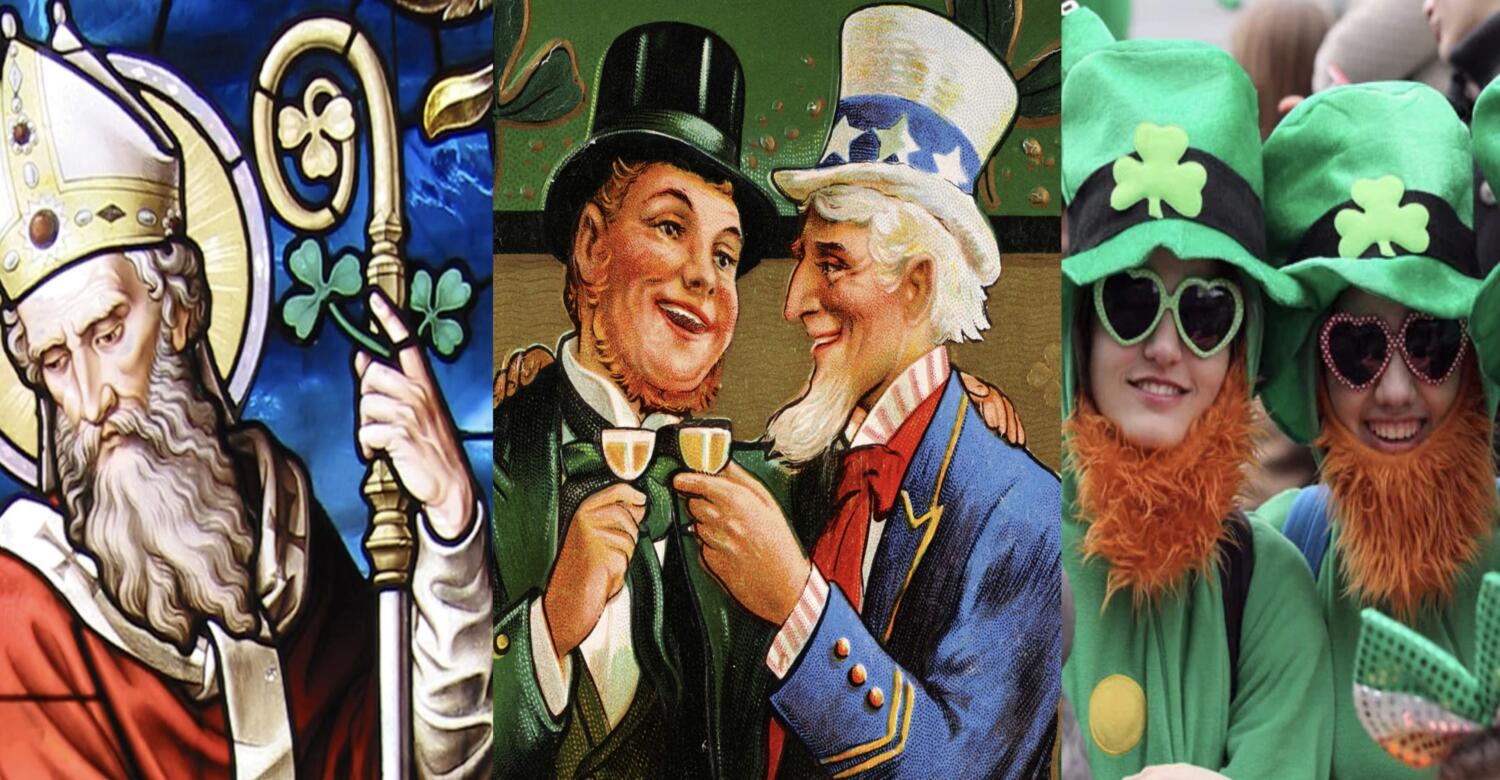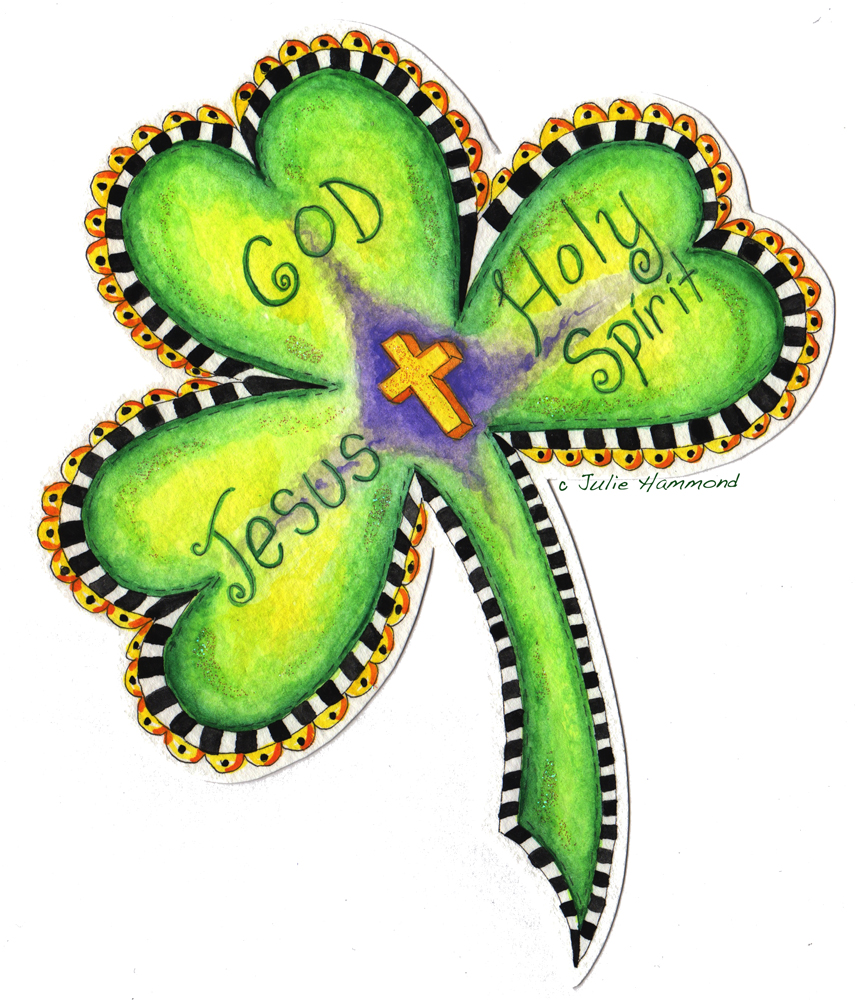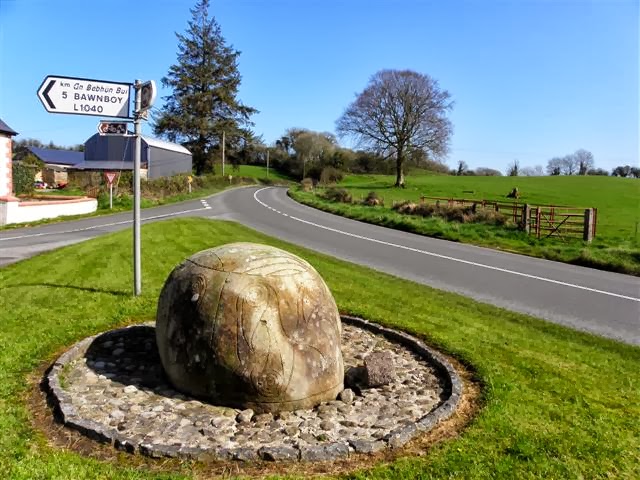
Eden Milligan | Editor-in-Chief
March 18, 2022
Happy belated St. Patty’s Day! Now that we have celebrated another year decked-out in green, why not take a look at the forgotten history behind the holiday? St. Patrick’s Day has been celebrated since the 5th century, though it has changed almost beyond recognition. Originally, the holiday was created to remember the Catholic missionary Saint Patrick who, despite not being Irish himself, is famed for bringing Christianity to the previously-Celtic people of Ireland.
The St. Patrick’s festivities of green dress-ups and parades originated with early Irish immigrants in the U.S. who wanted to keep their culture and heritage alive. Since the first St. Patty’s day parade in Florida in 1601, the holiday has further evolved to be seemingly centered around green wigs, Irish flags, and drinking — not so much the influence of the saint.
However, beyond the commercialization of the holiday, it still serves the purpose that it always has for many Americans with Irish heritage: connecting people to their ancestors and creating a sense of Irish community.
“My Grandpa always took great pride in his country, Ireland, and would always pull out an Irish joke or tell us the great stories of his parents’ time in Ireland,” San Clemente High School senior Britta Barnes said, reflecting on the memories that St. Patrick’s Day invokes for her. “Ever since I was born, we would fly up to Sacramento and meet with all of our extended family to celebrate the holiday. In the last few years, [when] my Grandpa was alive, the parties were only getting better, and I grew very close to my Grandpa and learned why we celebrate Saint Patrick’s Day all together,” Barnes added.
Similarly, for senior Liam Hallinan, whose father emigrated from Ireland, “Celebrating St. Patrick’s Day is a reminder of the history of my ancestry and the values that I hold close. It gives me a sense of grounding and allows me to express an important part of my identity.”
Still, aside from those with direct Irish heritage, St. Patrick’s Day may have lost its meaning. “The holiday has definitely lost its culture,” Barnes said, “and I have people around me asking ‘What’s the point of St. Patrick’s day?”
The tale of old Saint Patrick is rarely ever told, though it deserves to be shared — if not for the insight it provides into the nature of cultural change, at least for the entertainment value of the Saint’s partially-factual life story. St. Patrick’s day is, in a way, a celebration of the death of Irish culture (that is, Ancient Celtic culture) and a celebration of forced assimilation to the Roman Catholic belief system. At the same time, it celebrates the ability of a peoples to adapt to a new way of life while retaining aspects of their original culture. In this time of cultural diaspora and transformation, the origins of St. Patrick’s Day tell a familiar tale of cultures in conversation and conflict.
Who was Saint Patrick?
Saint Patrick was a famous Christian missionary who was believed to have lived sometime around 400 AD. He was born in England, which was controlled by the Catholic Romans at the time, and was kidnapped and sold into slavery in Ireland at the age of 16. Saint Patrick’s owner was a druid—a powerful man in Celtic society. Before Christianisation, druids served many crucial roles as judges, teachers, medicine men, lawmakers, and religious and political leaders. Despite being known as the most just of men in Celtic society, they were, understandably, demonized by young Saint Patrick. If only this was the last time in history that the lesson “justice and slavery do not mix” had to be taught. Anyway, eventually, Saint Patrick escaped slavery, was reunited with his family and returned to Ireland to spread Christianity and defeat the druids.
How was the Celtic religion replaced with Christianity?
Saint Patrick was not the first to attempt to convert the Irish “heathens”—as the Romans called them—to Christianity. Perhaps a century before Patrick, another Saint, Palladius, was pressured by the Roman authorities to travel to Ireland and spread Christian doctrine. He was unsuccessful, as his teachings did not correlate with the beliefs and desires of the people.

Saint Patrick took a different approach. Though he was initially met with much resistance in Ireland, he strove to make Christianity relatable to the people, which his years in Ireland prepared him for. One legend goes that Patrick used clovers to explain the holy trinity to the Irish people. Another one holds that he created the Celtic Cross, knowing that the circle was an important Celtic symbol that would make the crucifix easier to accept. Both of these are unlikely; in all early tales found by historians, the clover metaphor was not used, and the cross already existed in Celtic culture as a symbol of the four elements.
Whichever strategies Saint Patrick did use, they were certainly successful. Spreading a religion through a divided Ireland was no easy feat; unlike England, which quickly embraced Catholicism thanks to its centralized government, power in Ireland was held by druids in small communities. Still, Patrick was persistent. Historians estimate that he baptized 10,000 people in his life and planted 300 churches. Today, the seed of Christianity that Saint Patrick planted thrives, as nearly 80% of Irish people identify as Roman Catholic.
Myths of Saint Patrick
As the story goes, Saint Patrick banished the druids, and with them, all of the snakes in Ireland (as the Catholics perceived snakes as a symbol of evil druids). Scientists have different ideas about Ireland’s snakelessness, but it’s more fun to think that they all slithered away because of Patrick.
In addition to banishing the snakes and druids, St. Patrick allegedly banished the Celtic gods to hell, starting with the “god of the gods” Crom Cruanch. Crom Cruanch was a fertility god constantly hidden by mists who, according to Christian writers, was worshipped with human sacrifice. According to myth, St. Patrick found the golden idol of Crom Cruanch at Magh Slécht (a Stonehenge-like plain) and broke it in half, banishing the oozing mass of darkness that escaped it to hell, and causing the twelve surrounding stones to sink into the ground. This myth, like many others surrounding St. Patrick, likely emerged centuries after his death but is nonetheless well-preserved.

The Leprechauns
Christianity arose in Ireland alongside preexisting beliefs. Though the Celtic gods were abandoned, belief in mythical creatures like fairies, vampires, and evil goblins was not entirely abandoned. One deeply Irish mythical creature was known as a cobbler who played tricks on people for fun. Sometime around the eighth century, taking the name luchorpán, or leprechaun.
The leprechaun is, therefore, probably the most authentically Irish part of modern St. Patrick’s day tradition. Though early leprechauns apparently wore red army coats instead of the green ensembles we know them by, their pranking legacy has luckily been preserved.
In whole, the story of Saint Patrick is one of cultures merging in a time of great change. Some beliefs held for centuries were entirely replaced, while others were modified to fit the new Christian mold. In the same way, Americans have modified the holiday to fit our culture, keeping some aspects of Irish identity alive and creating new means of connection.
“Personally, I don’t think that [the American modifications to St. Patrick’s Day] detract from the meaning or the ability to celebrate; in fact, it’s just the opposite,” Hallinan said. “As a secular holiday, it gives more people an opportunity to learn and embrace the tradition, rather than being solely for members of a particular religion.”

Leave a Reply